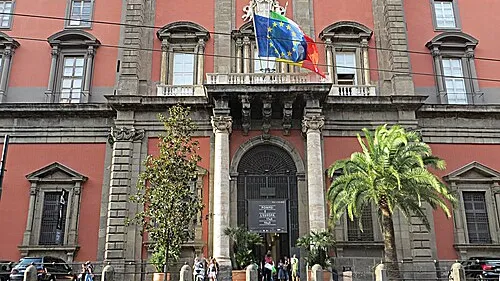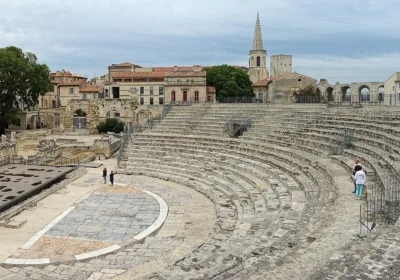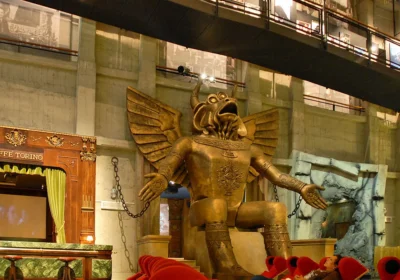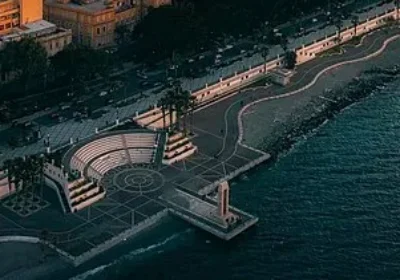National Archaeological Museum:
The National Archaeological Museum is one of the most interesting attractions in Naples. It contains unique exhibits recovered during the excavation of ancient Italian cities destroyed by volcanic eruption: Pompeii, Herculaneum, Stabii. The world’s largest and most valuable expositions from the point of view of cultural history are gathered under one roof.
The building, which houses thousands of exhibits, was built in 1615 as a university building. In the second half of the 18th century, the former university was converted to house the expositions of the Bourbon dynasty and the Royal Library. After that, the museum grew intensively and the collection of the Farnese family was moved here. Excavations in the area of Mount Vesuvius produced a whole collection of unique artefacts, which formed the basis of the new exhibition. Gradually the building was rebuilt and enlarged.
In 1860 the museum was taken over by the state and given the title of “national”. One of the best exhibitions is the collection of sculptures from various eras, but the most valuable among them are the works of ancient sculptors and architects recovered from the ruins of lost cities. The artefacts found during excavations are classified and divided into several separate exhibitions: the Farnese Hall, the Sculptures from the Thermae of Caracalla and the Emperors’ Gallery.
The Archaeological Museum is famous for its unique collection of frescoes, as well as floor and wall mosaics, which scholars attribute to the time between the 2nd century BC and 79 AD. Part of the exhibits are art objects found in the House of Faunus in Pompeii. The mosaic “The Battle of Alexander the Great with Darius” makes a great impression.
The National Archaeological Museum of Naples is interesting for its fine array of Egyptian antiquities. The core of the exhibitions was formed by the transfer of private collections into the hands of the state. Thus, visitors to the museum can take a look at one of the largest Egyptian displays in Italy.
In 2000, the museum opened for public access the so-called “Secret Cabinet”, a collection of erotic and explicitly pornographic art objects. The extensive collection of art and everyday objects shows that in ancient times a beautiful body was an object of honour, not shame.
The huge collection of coins occupies six halls and brings together about 200,000 objects. Coins and medals from ancient Greece, Rome, the Middle Ages and the Renaissance are among the largest such displays. It was also donated to the state by the Farnese family. Other interesting exhibitions include ancient household items, a collection of gladiatorial weapons, jewellery, religious paraphernalia, objects relating to the history of the Palaeolithic period, etc.
Open all days except Tuesday, Sunday (schedule subject to change by the museum), 24 and 25 December, 1 January, 1 May

















